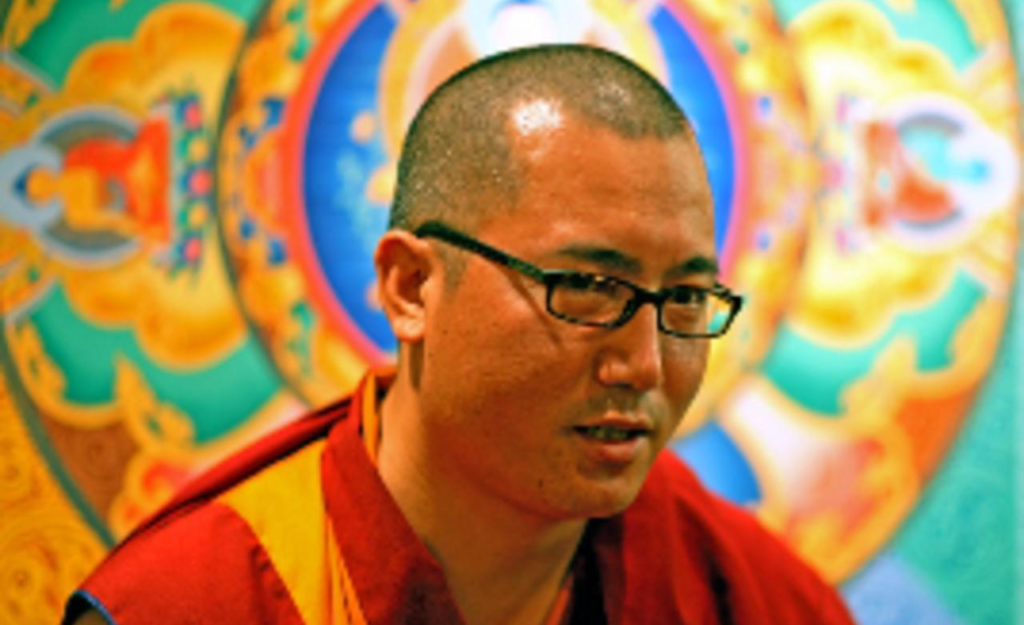
Alizah Salario’s essay explores the life and work of Dr. Kunchok Gyaltsen, the only practicing Tibetan Buddhist monk to have completed a doctorate in Public Health from an American university. Dr. Kunchok presented two sessions at the 2015 Art of Dying conference in New York City, addressing the challenges and rewards of preparing for a “good death” within a culture – and, particularly, a medical system – that aren’t set up to accept mortality.
In the Tibetan system, learning about death is integral to the practice. Dr. Kunchok flips through his PowerPoint and shares some of the many ways practitioners of Tibetan medicine are trained to recognize signs of death: The color and consistency of a patients’ urine is one indicator, the way the wrist creases when you put your palm to the top of your forehead is another — if you can easily see a line in your wrist, death is imminent. With this last one, everyone in the room presses palm to forehead to check their wrist crease. The audience laughs, craning awkwardly as they look for a new sign of death.
It’s a small gesture, but telling of Dr. Kunchok’s larger message: We can develop greater comfort with death, in our own bodies and in the bodies of those we care for.
